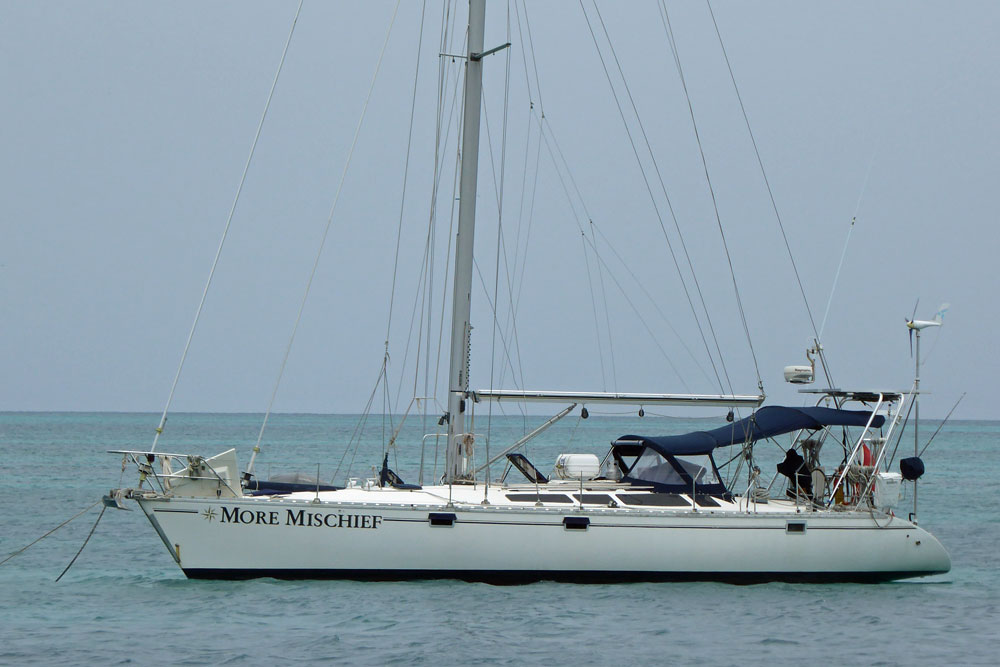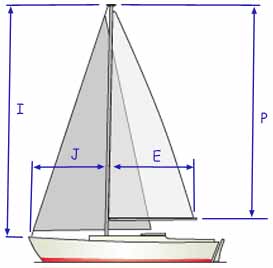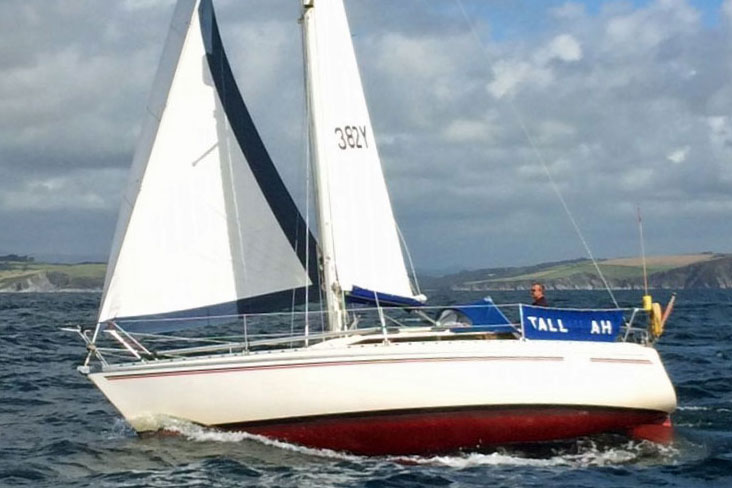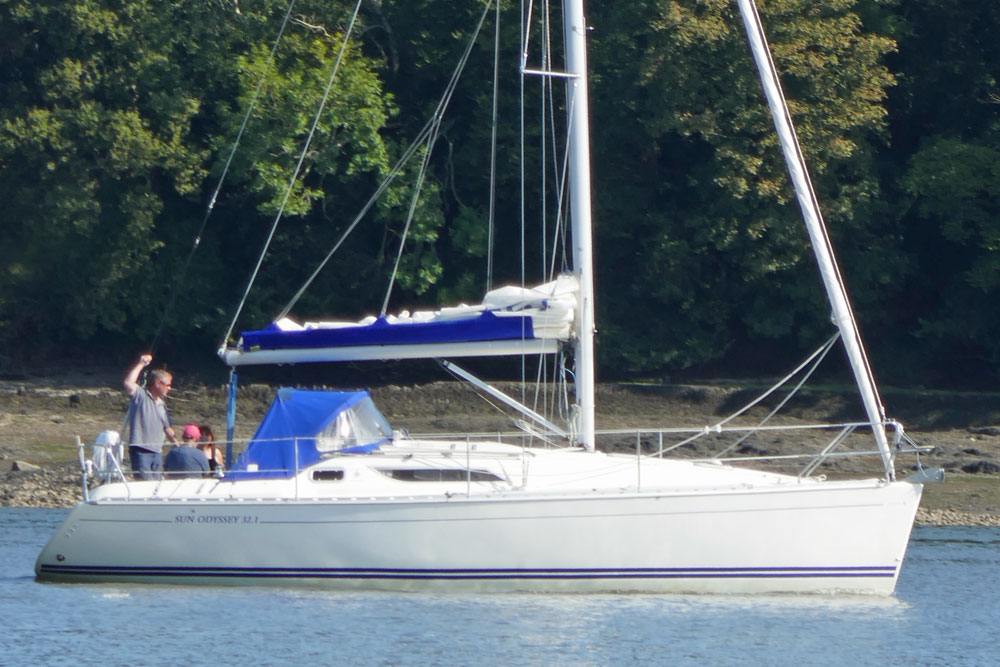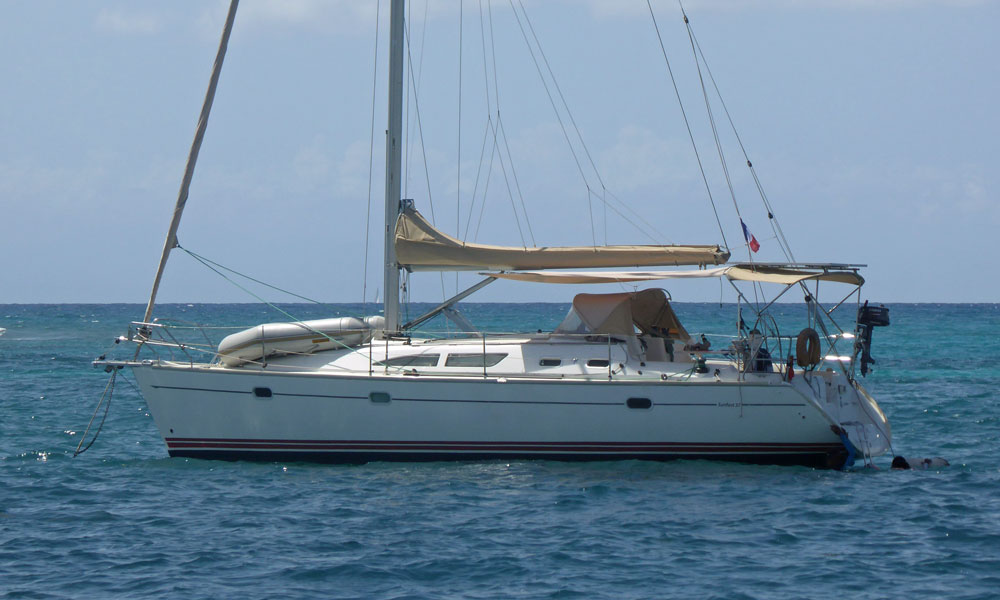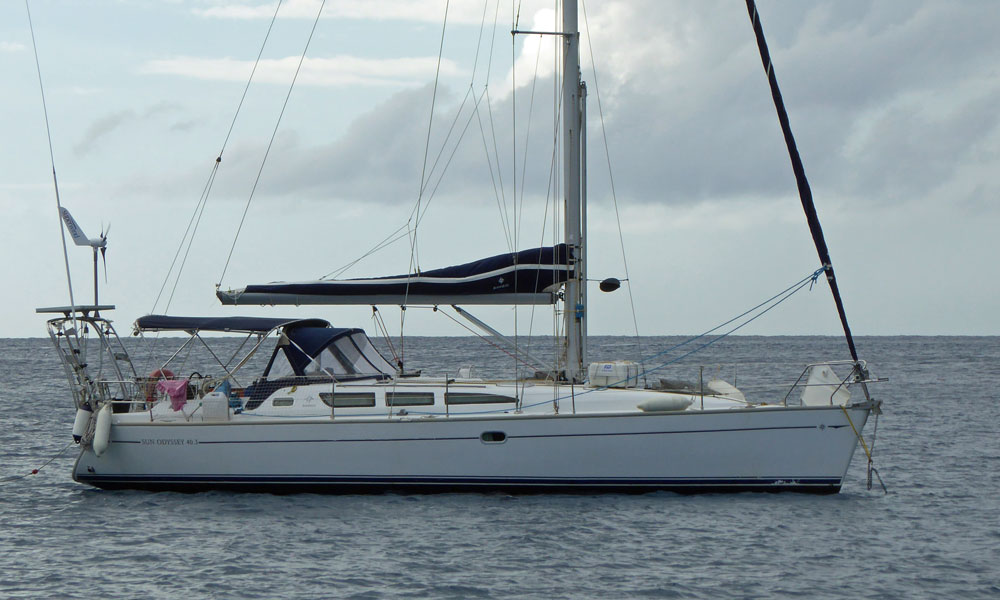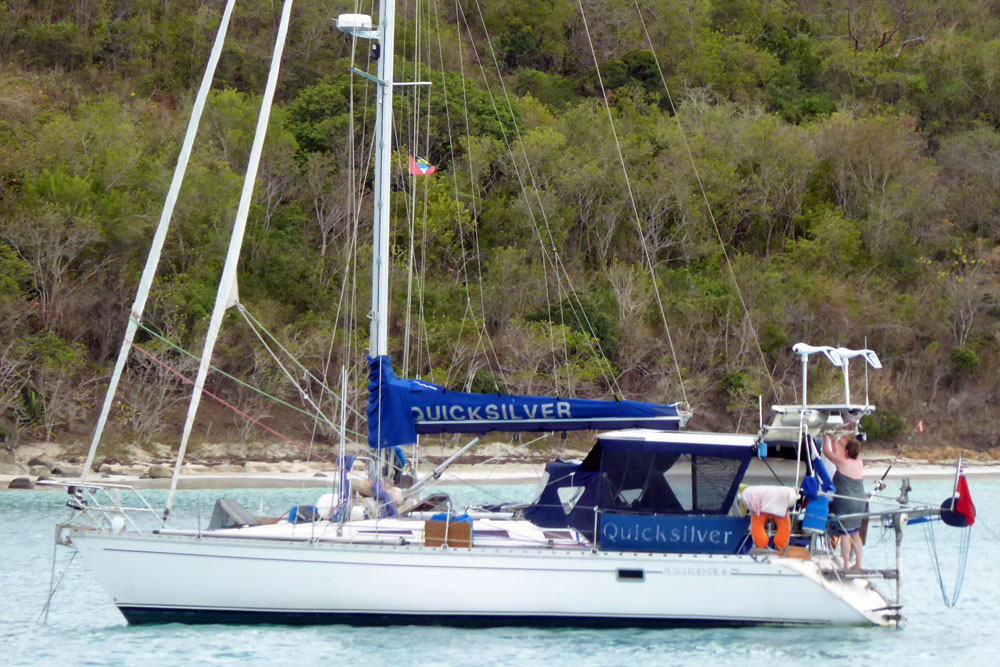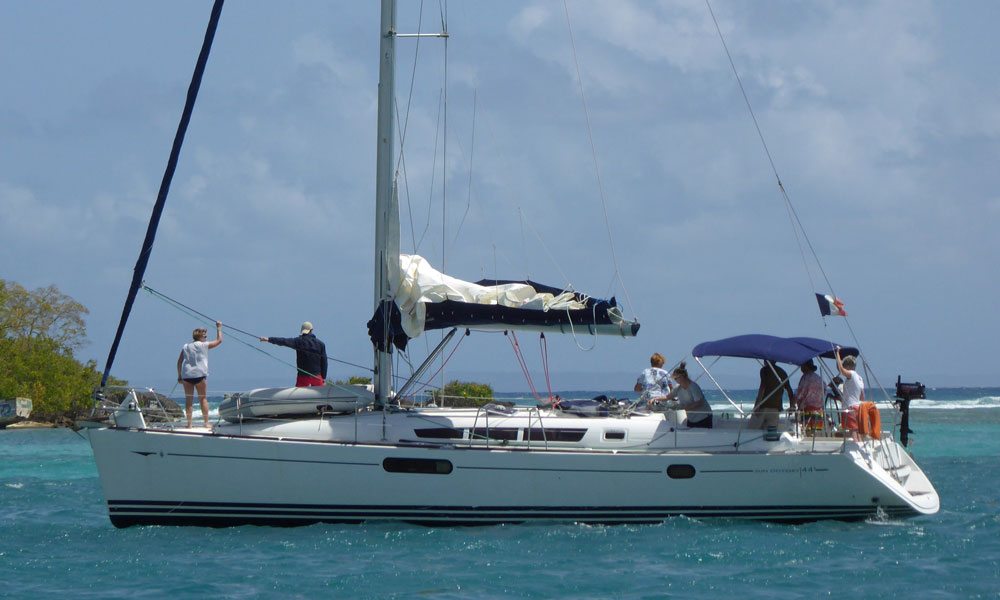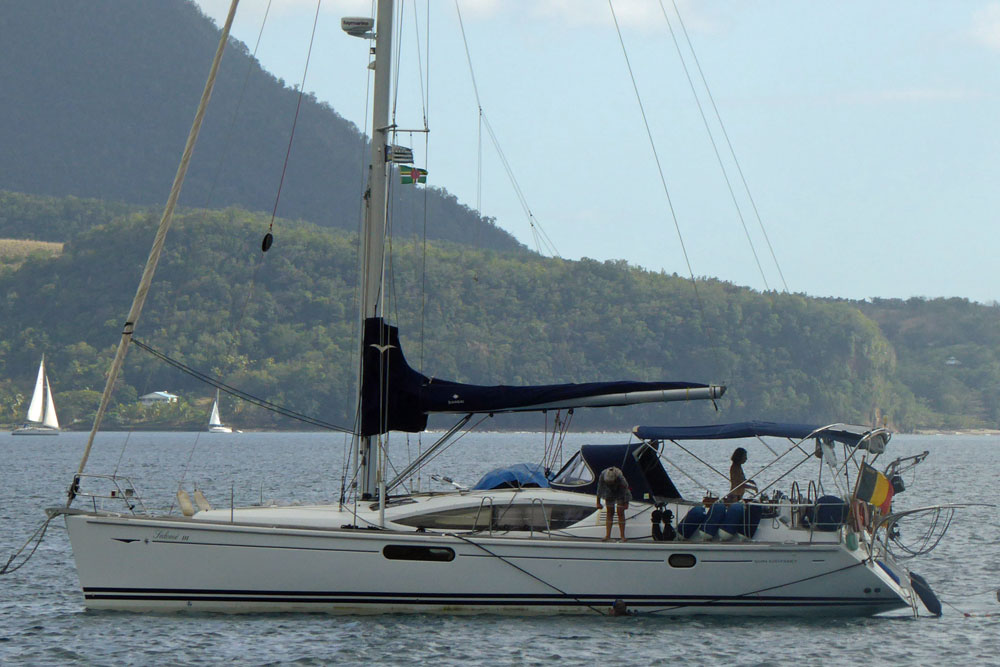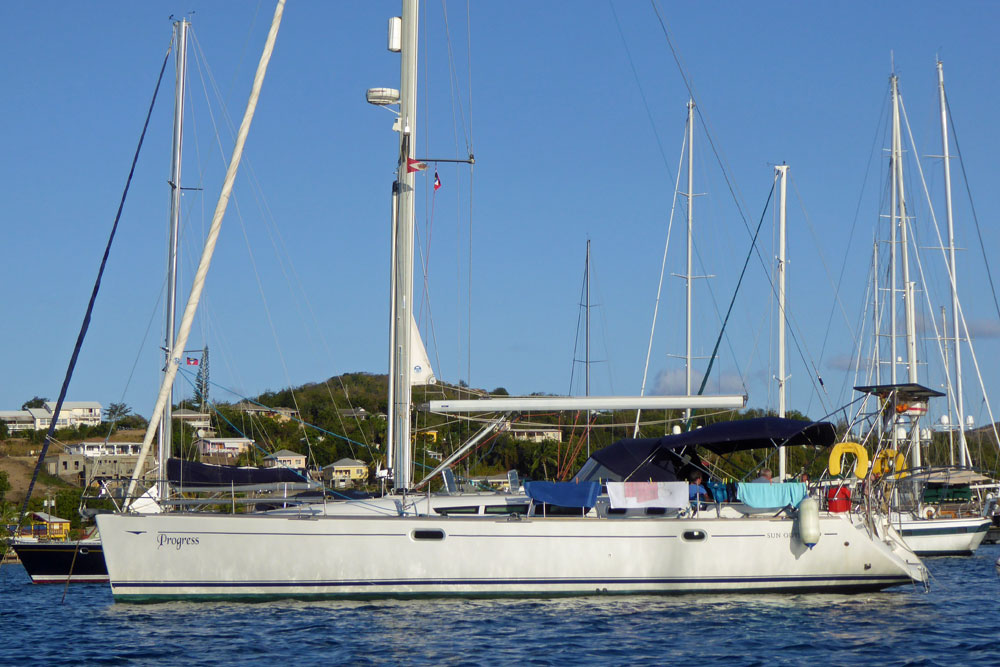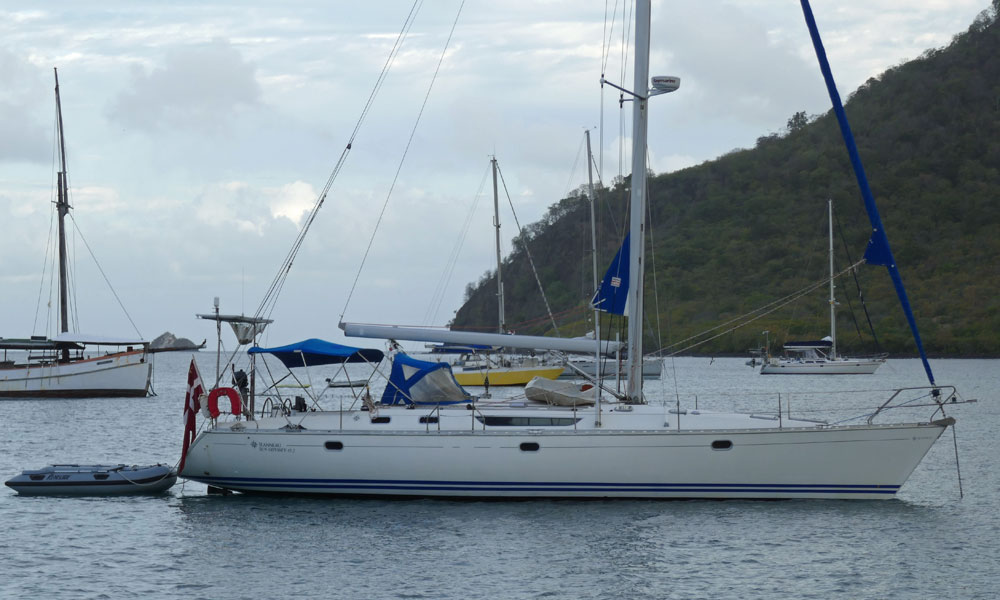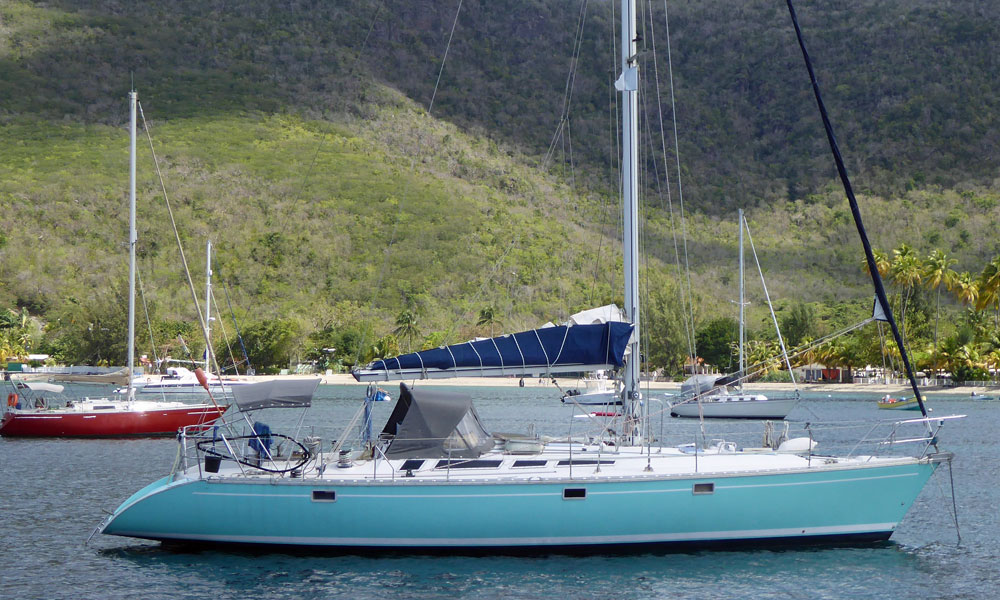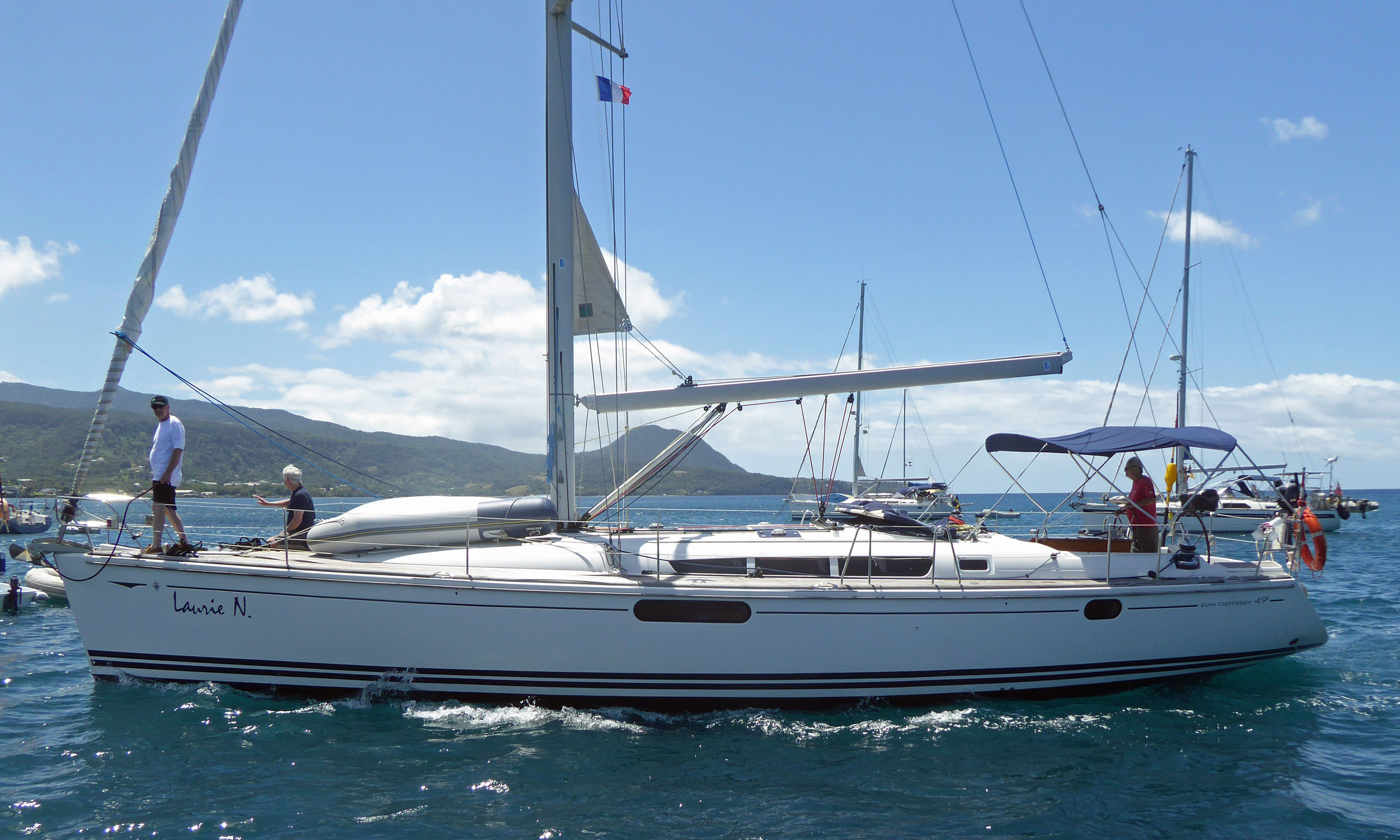- Home
- Cruising Yachts 45' to 50'
- Jeanneau Sun Kiss 47
The Jeanneau Sun Kiss 47 Sailboat
Specs & Key Performance Indicators
The Jeanneau Sun Kiss 47, a moderate displacement cruiser, was designed by Philippe Briand and built by the French manufacturer, Jeanneau.
Published Specification for the Jeanneau Sun Kiss 47
Keel & Rudder Configuration: Fin keel & spade rudder
Hull Material: GRP (Fibreglass)
Length Overall: 14.45m (47'5")
Waterline Length: 11.35 m (37'3")
Beam: 4.4m (14'5")
Draft: 2.7m (8'10")
Rig Type: Cutter
Displacement: 11,500kg (25,353lbs)
Ballast: 4,100kg (9,039lbs)
Water Tank Capacity: 580 L (153 US gallons)
Fuel Tank Capacity: 210 L (56 US gallons)
Hull Speed: 8.2 knots
Designer: Philippe Briand
Builder: Jeanneau
Year First Built: 1982
Year Last Built: 1989
Number Built: 315
Options & Alternatives
- Keel Options: There were two keel options available: a standard fin keel and a centerboard keel. The centerboard version drew 8'8" with the board down and 5'0" with it up.
- Interior Layout Options: The interior layout options included configurations with either two or three cabins. The two-cabin version featured a spacious owner's cabin forward, while the three-cabin version had two smaller cabins in the bow. Both versions included a large saloon, a well-equipped galley, and ample storage space.
There was a later version of the Sun Kiss 47 sailboat known as the Sun Odyssey 47. The essential differences between the two are:
- Rigging: The Sun Kiss 47 primarily featured a cutter rig, while the Sun Odyssey 47 was typically rigged as a sloop.
- Deck Layout: The Sun Odyssey 47 had a more modern deck layout, including a cabin-top traveler for the mainsheet, which was different from the cockpit traveler found on the Sun Kiss 47.
- Interior Layout: The Sun Odyssey 47 offered updated interior layouts with more contemporary finishes and improved use of space. Both versions had options for two or three cabins, but the Sun Odyssey 47's interior was designed to be more comfortable and luxurious.
- Keel Options: Both models offered similar keel options, including a standard fin keel and a keel with a centerboard for shallower draft.
Sail Areas & Rig Dimensions
Rig Dimensions:
- I: 16.3m (53'5")
- J: 5.3m (17'5")
- P: 14.4m (47'3")
- E: 4.6m (15'1")
Sail Areas:
- Mainsail Area: 36.3m² (391 ft²)
- Genoa Area: 65m² (700 ft²)
- Upwind Sail Area: 101.3m² (1,090 ft²)
- Downwind Sail Area: 181.7m² (1,956 ft²)
Published Design Ratios
The Key Performance Indicators (KPIs)
Sail Area/Displacement Ratio: 15.1
Ballast/Displacement Ratio: 40.0%
Displacement/Length Ratio: 219
Comfort Ratio: 27.9
Capsize Screening Formula: 2.0
The following analysis of the primary design ratios gives an indication of the boat's likely sailing characteristics, but see the 'Notes of Caution' that follow below:
- Sail Area/Displacement Ratio (15.1): This ratio indicates that the Sun Kiss 47 is slightly underpowered compared to high-performance sailboats. It suggests that the boat will perform reasonably well but may require stronger winds to reach its full potential. This is typical for a cruising sailboat designed for comfort and stability rather than racing.
- Ballast/Displacement Ratio (40.0%): A ratio of 40% indicates a stiff and stable boat that can stand up well to the wind. This means the Sun Kiss 47 will have good initial stability, making it a reliable choice for cruising in various wind conditions.
- Displacement/Length Ratio (219): This ratio places the Sun Kiss 47 in the moderate displacement category. It suggests that the boat has a good balance between weight and length, providing a comfortable ride with decent performance. It won't be as fast as a light displacement boat but will offer a smoother and more stable experience, especially in rougher seas.
- Comfort Ratio (27.9): With a comfort ratio of 27.9, the Sun Kiss 47 is expected to have a somewhat lively motion, typical of a coastal cruiser with moderate stability. It should provide a comfortable ride for coastal cruising and moderate bluewater passages, but it may not be as sedate as heavier bluewater cruisers.
- Capsize Screening Formula (2.0): A capsize screening value of 2.0 indicates that the Sun Kiss 47 is on the threshold for bluewater capability. It suggests that the boat is suitable for ocean passages but may not be as inherently stable as boats with a lower capsize screening value. Proper handling and seamanship will be important for safe offshore sailing.
Overall, the Jeanneau Sun Kiss 47 is designed to be a capable and comfortable cruiser, suitable for both coastal and moderate bluewater sailing. It offers a good balance of performance, stability, and comfort, making it a versatile choice for long-distance cruising. If you have any more questions or need further details, feel free to ask!
Design Ratios: Notes of Caution...
- The Sail Area/Displacement Ratio (SA/D): This ratio provides an estimate of the sail power relative to the boat's weight, which can indicate potential speed in various wind conditions. But it doesn't account for the efficiency of the sail plan, the rigging, or the skill of the crew. Real-world performance can vary significantly based on these factors.
- The Ballast/Displacement Ratio (B/D): This ratio gives an idea of the boat's stability and stiffness, which is crucial for handling and safety. But it doesn't consider the distribution of the ballast or the hull shape, both of which can greatly affect stability. A high B/D ratio alone doesn't guarantee a stable boat if the ballast is poorly distributed.
- The Displacement/Length Ratio (D/L): This ratio helps predict the boat's speed potential and its behaviour in different sea conditions. But it doesn't account for the hull design or the boat's overall weight distribution. Two boats with the same D/L ratio can perform very differently if their hull shapes are different.
- The Comfort Ratio (CR): This ratio estimates the boat's motion comfort in a seaway, which is important for long passages. But it doesn't consider the boat's interior layout, which can also affect comfort. Additionally, personal tolerance to motion varies, so a boat that is comfortable for one person might not be for another.
- The Capsize Screening Formula (CSF): This formula assesses the likelihood of a boat capsizing in heavy seas, which is critical for offshore safety. But it doesn't take into account the boat's handling characteristics or the skill of the crew. A boat with a low CSF can still capsize if poorly handled in severe conditions.
General Limitations
- Static Nature: These ratios are static measurements and don't account for dynamic factors like wave action, wind gusts, or crew actions.
- Simplification: They simplify complex interactions into single numbers, which can be misleading. Real-world performance is influenced by a multitude of factors that these ratios can't fully capture.
- Context: The context in which the boat is used (e.g., coastal cruising vs. offshore racing) can greatly affect how these ratios should be interpreted.
In summary, while these ratios provide valuable insights into the theoretical performance characteristics of a sailboat, they should be used as part of a broader assessment that includes practical experience, sea trials, and expert advice.
The above text was drafted by sailboat-cruising.com using GPT-4 (OpenAI’s large-scale language-generation model) as a research assistant to develop source material; we believe it to be accurate to the best of our knowledge.
Other sailboats in the Jeanneau range include:
Recent Articles
-
Is Marine SSB Still Used?
Apr 15, 25 02:05 PM
You'll find the answer to this and other marine SSB-related questions right here... -
Is An SSB Marine Radio Installation Worth Having on Your Sailboat?
Apr 14, 25 02:31 PM
SSB marine radio is expensive to buy and install, but remains the bluewater sailors' favourite means of long-range communication, and here's why -
Correct VHF Radio Procedure: Your Questions Answered
Apr 14, 25 08:37 AM
Got a question about correct VHF radio procedure? Odds are you'll find your answer here...
